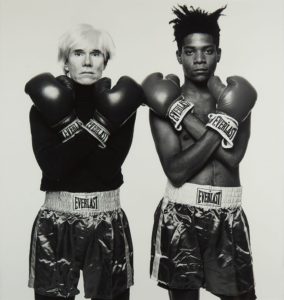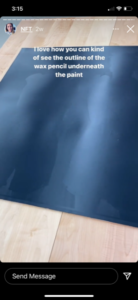Lessons from 28 U.S.C. § 2202: Don’t Forget To Include a Prayer for “Other and Further Relief” In Your Complaint
By Hannah Brown on December 14, 2022
Leave a comment
Author: Hannah Brown
In drafting a complaint, we all subconsciously throw in a catch-all last request in our prayer for relief: “other and further relief as the court may deem to be just and proper.” Upon further reflection, do we know why we do that? Imagine the situation: the jury finds the plaintiff has been damaged in the amount of $50,000, and in awarding judgment, the court says “actually, I think plaintiff deserves another $5,000, and I find that relief to be just and proper. Judgment awarded to plaintiff for $55,000.” It doesn’t happen.
But that doesn’t mean you should take that request out of your complaint or that it serves no purpose. To the contrary, inclusion of such sentence could save you.
The relevant statute is 28 U.S.C. § 2202, which provides: “Further necessary or proper relief based on a declaratory judgment or decree may be granted, after reasonable notice and hearing, against any adverse party whose rights have been determined by such judgment.” This allows a party to seek further relief — whether it be damages, fees, or an injunction — following a court order of declaratory relief.
Litigants may file motions for further relief pursuant to 28 U.S.C. § 2202, following a declaratory judgment. The court’s power to afford relief under this statute is broad, and “the prevailing party [in a declaratory judgment action] may seek further relief in the form of damages or an injunction.” Kaspar Wire Works, Inc. v. Leco Eng’g & Mach., Inc., 575 F.2d 530, 537 (5th Cir. 1978). Indeed, “all necessary or proper relief based on the declaratory judgment should be granted.” Nat’l Fire Ins. Co. of Hartford v. Bd. of Pub. Instruction of Madison County, Fla., 239 F.2d 370, 376 & n.11 (5th Cir. 1956) (emphasis added). The relief need not be necessary to effectuate the declaratory judgment ruling, it only needs to be proper. Horn & Hardart v. Nat’l Rail Passenger Corp., 843 F.2d 546, 548 (D.C. Cir. 1988).
In Edward B. Marks Music Corp. v. Charles K. Harris Music Publishing Co., 255 F.2d 518, 522 (2d Cir.1958), one of the most highly-cited cases analyzing this statute, the court held “the further relief sought [under the statute] … need not have been demanded, or even proved, in the original action for declaratory relief. [Rather,] [t]he section authorizes further or new relief based on the declaratory judgment, and any additional facts which might be necessary to support such relief can be proved … in an ancillary proceeding if … necessary.” (emphasis added).
The statute has proven useful in intellectual property cases. In Fred Ahlert Music Corp. v. Warner Chappell Music, Inc., 155 F.3d 17, 25 (2d Cir. 1998), the plaintiff Ahlert requested declaratory judgment that it was entitled to license the use of the song “Bye Bye Blackbird.” The court agreed, finding plaintiff was entitled to license the song during the relevant period and “to receive 50% of all mechanical royalties … payable for the use of the Song.” Prior to that order declaration, defendant Warner had been receiving these royalties. Accordingly and pursuant to that declaration, the court ordered defendant Warner to: (1) pay Ahlert the sum of 50% of the mechanical royalties paid to Warner by third party Sony, and (2) account for and pay to Ahlert 50% of all other applicable royalties paid to Warner during the relevant term; and (3) pay Ahlert prejudgment interest.
Warner appealed. Warner argued that the district court’s judgment was too broad because it encompassed relief neither sought by Ahlert in the complaint nor litigated at trial. The Second Circuit affirmed, first noting: “In its prayer for relief, Ahlert asked the district court to “grant [ ] such other and further relief as the court may deem to be just and proper,” thus invoking the district court’s power pursuant to 28 U.S.C. § 2202 to provide any “[f]urther necessary or proper relief based on a declaratory judgment or decree … against any adverse party whose rights have been determined by such judgment.” The panel went on to reason that the district court declared that Ahlert, rather than Warner, has the authority to license new uses of the song. The relief awarded by the district court followed directly from that declaration because Ahlert is entitled to receive royalties from post-termination licenses, and the judgment awarding those royalties to Ahlert was “proper relief based on a declaratory judgment.”
This case makes clear that a party is not barred from seeking relief under this statute even if the party forgot to plead for that relief in their complaint. The statute is also useful if a party did not know it needed to plead for the relief. It is illogical for a plaintiff to include a claim for copyright infringement or copyright infringement damages if plaintiff has not yet been declared the owner of said copyright. For example, in Columbia Casualty Co. v. Abdou, No. 15CV80-LAB (KSC), 2016 WL 4417711, at *1 (S.D. Cal. Aug. 18, 2016), plaintiff insurer Columbia brought a complaint seeking declaratory judgment as to whether it was obligated to provide coverage under the policy and included a prayer for “such additional … relief as the Court finds appropriate.” The court found no potential for coverage and granted judgment in Columbia’s favor. Columbia then moved for reimbursement of the defense costs. The court granted them, finding “Even absent a specific demand for money damages in its complaint, Columbia’s request for reimbursement qualifies as ‘proper relief’ under § 2202.” Id.
Case law on this point is consistent: a district court may grant relief, including monetary damages, whether or not the relief “ha[d] been demanded, or even proved, in the original action for declaratory relief.” Fred Ahlert Music Corp. v. Warner Chappell Music, Inc., 155 F.3d 17, 25 (2d Cir. 1998). This is because the statute itself accounts for a process by which the party may present any new facts to support such relief, as the statute allows for a “reasonable notice and hearing” before the court can issue further relief. 28 U.S.C. § 2202; see Westport Ins. Corp. v. Bayer, 284 F.3d 489, 500 (3d Cir. 2002) (stating that upon a motion for further relief, “the district court may resolve this issue after notice and hearing either on the present record or, at its option, by hearing additional evidence”).
While there must be some relationship between the further relief requested and the underlying declaratory relief, the further relief can go beyond the direct enforcement of the precise terms of the declaratory relief. In Horn & Hardart Co., the court issued a declaratory judgment that lease provisions were violated and therefore defendant Amtrak had the right to terminate the lease. Then, relying on section 2022, the court went on to enforce a different lease provision to award Amtrak damages and fees. 843 F.2d at 549. The appellate court affirmed, finding such an award was proper because that relief “follows absolutely from, and is based on” the court’s decision confirming Amtrak’s right to terminate the lease. Id. Even though Amtrak’s request for further relief in the form of rent and fees was not “necessary” to effectuate the lease termination ruling, it was proper. Id.; see also Tractor & Equip. Co. v. Dual Trucking & Trans., LLC, No. 15-5413, 2017 WL 3601212, at *3 (E.D. La. Aug. 22, 2017) (“The purpose of 28 U.S.C. § 2202 is to enable courts to grant further relief, not merely relief already required by the terms of the declaratory judgment.”).
Section 2202 is not useful in every case—of course there must be a declaratory judgment in place for a party to even argue this section’s applicability—but it should and could be used to argue entitlement to damages or an injunction if such relief would flow naturally from a prior judgment. A party can argue that such relief is appropriate where “[t]he district court’s denial of the motion for further relief would effectively render this declaratory judgment meaningless.” United Tchr. Assocs. Ins. Co. v. Union Lab. Life Ins. Co., 414 F.3d 558, 574 (5th Cir. 2005). The lesson learned here is that it is always to one’s benefit to include this catch-all provision for further relief in the complaint, as you never know when you may need it.
About the author: Hannah Brown is Senior Counsel and member of Gordon Rees Scully Mansukhani’s Intellectual Property Practice Group, specializing in trademark, copyright, and patent litigation. She is a former law clerk to the Hon. Janis Sammartino and Hon. Cynthia Bashant of the U.S. District Court, Southern District of California.





